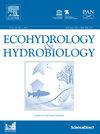Modeling river water dissolved organic matter using ensemble computing and genetic programming techniques
IF 2.7
4区 环境科学与生态学
Q2 ECOLOGY
引用次数: 0
Abstract
Dissolved organic matter (DOM) plays a diverse role in aquatic ecosystems and is a key participant in global carbon budgets; thus, precise simulation and modeling of DOM concentrations in rivers and streams is critical in hydro-environmental projects. Among various modeling strategies, data-driven Machine Learning (ML) approaches ‒ and particularly Ensemble Machine Learning (EML) models ‒ have proven their fair capabilities in simulating environmental issues in aquatic media based on the information available from a limited number of physicochemical and biological parameters of water. In this regard, several MLs (such as Support Vector Regression, SVR, and Extreme Learning Machine, ELM), two EMLs (e.g., Random Forests, RF, and Boosted Trees, BTs), as well as Gene Expression Programming (GEP), are evaluated for predicting fluorescent Dissolved Organic Matter (fDOM) in the Caloosahatchee River in Florida. The modeling strategy of fDOM was based on constructing regular and ensemble ML models using seven quantitative and qualitative independent parameters (flow rate, temperature, specific conductance, dissolved oxygen, pH, turbidity, and nitrate recorded from 2017 to 2019) after all being introduced as influential parameters on the target variable (fDOM) using the best subset regression technique. Based on the k-fold cross-validation method (k = 4), the applied regular MLs (SVR, ELM, and GEP) provided better performance than the traditional multiple linear regression model (on average, 6.8 % improvement in RMSE). However, the results showed that the EML models (RF and BT) outperformed the regular MLs (on average, 7.2 % improvement in RMSE) in fDOM prediction.
利用集合计算和遗传编程技术建立河水溶解有机物模型
溶解有机物(DOM)在水生生态系统中发挥着多种作用,是全球碳预算的关键参与者;因此,河流和溪流中DOM浓度的精确模拟和建模对水文环境项目至关重要。在各种建模策略中,数据驱动的机器学习(ML)方法,特别是集成机器学习(EML)模型,已经证明了它们在基于有限数量的水的物理化学和生物参数提供的信息模拟水生介质环境问题方面的公平能力。在这方面,几个机器学习(如支持向量回归,SVR和极限学习机,ELM),两个机器学习(如随机森林,RF,增强树,BTs),以及基因表达编程(GEP),用于预测佛罗里达州Caloosahatchee河中的荧光溶解有机质(fDOM)。fDOM的建模策略是利用2017 - 2019年记录的7个定量和定性独立参数(流量、温度、比电导、溶解氧、pH、浊度和硝酸盐)作为影响目标变量(fDOM)的参数,利用最佳子集回归技术构建规则和集成ML模型。基于k-fold交叉验证方法(k = 4),应用的规则ml (SVR, ELM和GEP)比传统的多元线性回归模型(平均RMSE提高6.8%)具有更好的性能。然而,结果表明,EML模型(RF和BT)在fDOM预测方面优于常规ml模型(平均RMSE提高7.2%)。
本文章由计算机程序翻译,如有差异,请以英文原文为准。
求助全文
约1分钟内获得全文
求助全文
来源期刊

Ecohydrology & Hydrobiology
Agricultural and Biological Sciences-Aquatic Science
CiteScore
5.40
自引率
3.80%
发文量
51
期刊介绍:
Ecohydrology & Hydrobiology is an international journal that aims to advance ecohydrology as the study of the interplay between ecological and hydrological processes from molecular to river basin scales, and to promote its implementation as an integrative management tool to harmonize societal needs with biosphere potential.
 求助内容:
求助内容: 应助结果提醒方式:
应助结果提醒方式:


